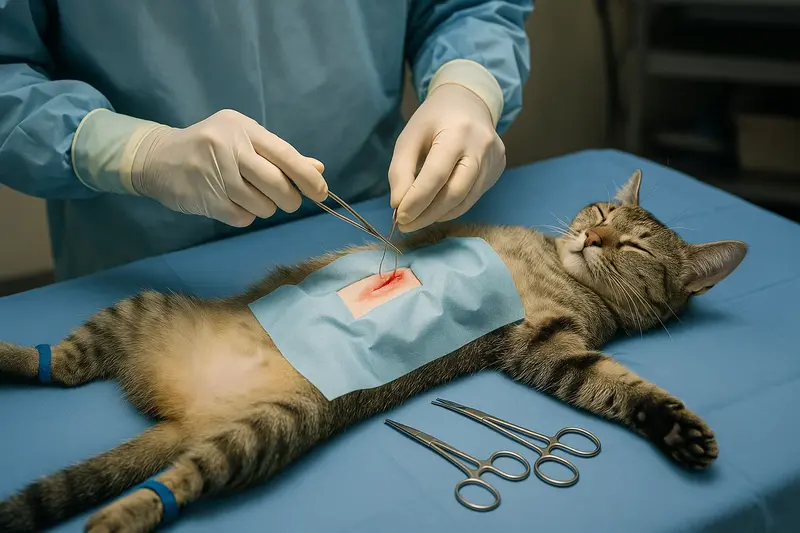Neutering cats not only prevents uncontrolled reproduction but also has significant benefits for their health and behavior. As a pet expert, one of the most common questions I receive is: “At what age can my cat be neutered?” This decision involves more than just timing—it affects surgical safety, behavioral development, and long-term well-being. In this article, we’ll explore the ideal age and considerations for cat neutering from multiple professional angles.

Neutering includes two types of surgical procedures: castration for males (removal of the testicles) and spaying for females (removal of the ovaries and uterus). These surgeries eliminate reproductive capability and reduce hormone-driven behaviors.
Prevent unwanted litters and reduce stray animal populations
Lower the risk of reproductive diseases (e.g., pyometra, testicular cancer, mammary tumors)
Reduce behavioral issues like spraying, fighting, and yowling
Extend life expectancy and improve quality of life
Most veterinarians recommend neutering cats at 5 to 6 months of age. By this time, they are physically mature enough to handle surgery with lower anesthetic risk and, in females, often before their first heat cycle.
Some animal shelters and rescue organizations advocate for early-age neutering—between 8 and 16 weeks—particularly before adoption.
Advantages:
Prevents early sexual maturity
Smaller incision, quicker recovery
Encourages earlier establishment of good behavior patterns
Potential Concerns:
Requires skilled anesthesia management
Minor concerns about bone development, though no conclusive adverse effects have been proven
Yes, they can be neutered too. As long as the cat is in good health, neutering is safe at any age—even at 1, 3, or 10 years old.
Tip: For female cats that have experienced multiple heat cycles or developed uterine issues, neutering can serve both preventive and therapeutic purposes.
Ideal Age: Before 5–6 months
Benefits:
Prevents hormone-driven spraying
Reduces risk of fights and roaming
Lowers risk of testicular tumors and prostate issues
Note: The procedure is simpler and recovery is usually within 24 hours.
Ideal Age: Before first heat cycle (around 5–6 months)
Benefits:
Prevents heat-related behaviors (yowling, loss of appetite, anxiety)
Greatly reduces risk of mammary cancer and uterine infections
Prevents unplanned pregnancy
Note: As an abdominal surgery, recovery may take 3–5 days and requires closer post-op care.
No food or water 8 hours before surgery
Ensure the cat is healthy (no cold or digestive issues)
Vaccinations and a basic health check are recommended
Provide a quiet, warm, and clean recovery space
Prevent licking of incision (use an Elizabethan collar if needed)
Offer small, frequent meals
Monitor temperature, appetite, energy, and litter box habits
Attend follow-up appointments and remove stitches (or ensure absorbable sutures are healing well)
Yes, metabolism may slow slightly post-neutering. But with proper diet and regular exercise, weight gain can be prevented.
Quite the opposite—neutering is a responsible act of pet ownership. It helps avoid unnecessary suffering, disease, and stress in both pets and their offspring.
Age alone is not a restriction. As long as your cat is in good health and passes a pre-op assessment, neutering is generally safe regardless of age.
Choosing the right time to neuter your cat is a vital part of responsible pet care. From preventing diseases to shaping desirable behaviors, this decision brings long-term benefits.
Under the guidance of your veterinarian, you can determine the ideal timing for the procedure, prepare properly, and provide attentive post-operative care—ensuring your cat leads a healthier, more peaceful life.
Remember: real care starts with informed choices, and responsibility begins with neutering.
animal tags:
We created this article in conjunction with AI technology, then made sure it was fact-checked and edited by a Animals Top editor.